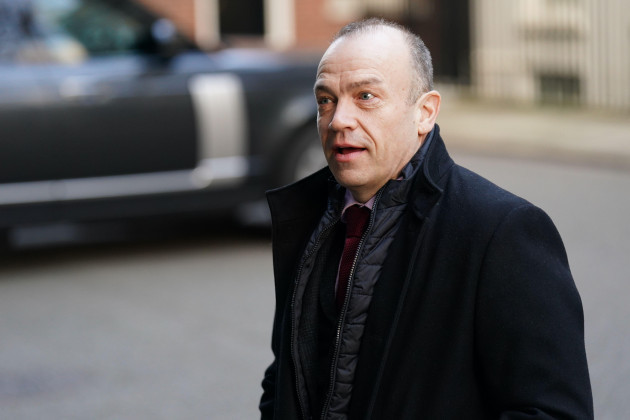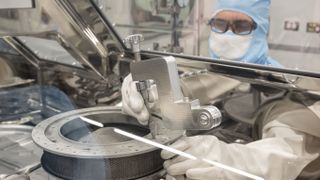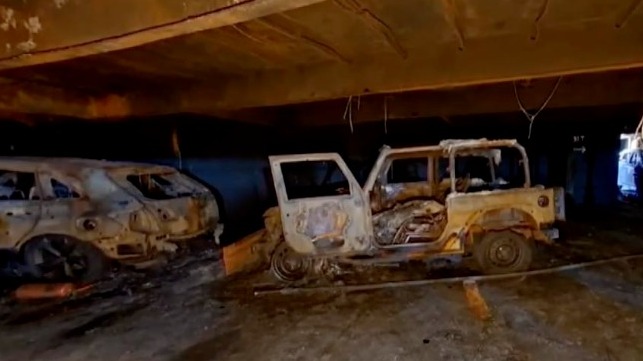
Sinn Féin in bid to recall Stormont Assembly next week ahead of public sector strike
A BID IS under way to have the Stormont Assembly recalled next week.
Sinn Féin is attempting to bring the recall on Wednesday – the day before trade unions are planning one of the largest public sector strikes Northern Ireland has seen in recent history.
Thursday is also the deadline for Secretary of State for Northern Ireland Chris Heaton-Harris to call fresh Assembly elections if devolved government in Northern Ireland has not been restored.
The Assembly has been effectively collapsed for almost two years. The DUP is refusing to participate until unionist concerns around post-Brexit trading arrangements are addressed.
Sinn Féin’s Stormont leader Michelle O’Neill said her party has initiated an Assembly recall to restore the Executive and “urgently deliver a fair pay deal for public sector workers”.
The recall motion will require the backing of 30 MLAs to succeed.
It urges that the Assembly meets urgently to elect a Speaker and Deputy Speakers, appoint ministers and back a motion which endorses fair pay settlements for public sector workers.
It also calls for the DUP to “respect the democratic outcome of the May 2022 Assembly election” in which Sinn Fein made history by becoming the first nationalist or republican party to top the Stormont poll and entitling it to nominate the first nationalist or republican First Minister.
Finally it emphasises the “pressing need to urgently reinstate the Executive to tackle the unprecedented challenges confronting citizens and our public services, particularly the immediate matter of public sector pay”.
The DUP has insisted it will not end its blockade until it secures legislative assurances from the Government on Northern Ireland’s trading position within the UK.
Heaton-Harris has said his talks with the DUP over the Windsor Framework have concluded, although leader Jeffrey Donaldson has insisted engagement is continuing.
Heaton-Harris has invited the main Stormont parties to take part in bilateral talks at Hillsborough Castle on Monday about the Stormont stalemate.
O’Neill also pressed the DUP today to make a decision on re-entering the Assembly.
“It is decision time for the DUP,” she said.
“There can be no more delays or excuses. Our public sector workers play a pivotal role right across our society, working in our hospitals, schools, on trains and buses, and within the civil service.
“The DUP cannot continue to leave workers and families in the lurch any longer.”
Earlier DUP MP Gavin Robinson insisted there is no legal basis for joint authority rule in Northern Ireland if devolved government is not restored.
Robinson was reacting after Conservative MP and chair of the Northern Ireland Affairs Committee Robert Buckland said any alternative to the DUP agreeing a deal to restore the Stormont Executive would likely mean the “involvement of the Irish government”.
The DUP deputy leader accused Buckland of making “hollow threats”.
During an appearance on the BBC’s The View programme, Buckland said that a return to direct rule for Northern Ireland would mean “triggering certain aspects of the Good Friday Agreement” and “involvement of the Irish government, ultimately”.
When asked if “old-style direct rule of the past” was off the table, he responded: “I think so.”
Robinson responded: “Sir Robert Buckland seems to be confused. It’s not often he is wrong, but on this he is.
“The Republic of Ireland has no legal basis for governing Northern Ireland. Such a step would be a further breach of the Belfast and successor agreements.”
He added: “It is the arrangements flowing from the Northern Ireland Protocol alone that are stopping the formation of an Executive.
“We are focused on getting this right and restoring the balance. We will not be distracted by Sir Robert’s confused viewpoint.
“Rather than issue hollow threats about some version of joint authority, Sir Robert and his colleagues would be better to focus on restoring Northern Ireland’s place within the UK internal market.
“Replacing the protocol with arrangements that unionists, as well as nationalists, can support will provide a solid foundation for the restoration of devolution on a cross-community basis.”
Previous talks between Heaton-Harris and the main Stormont parties over a £3.3 billion (€3.8 billion) financial package to accompany the return of devolution broke up at Hillsborough Castle in December without any agreement to restore the Assembly and Executive.
The package would include money to make an outstanding pay award to public sector workers.
With their pay demands still unmet, unions are planning a major strike across Northern Ireland on 18 January.
Buckland denied that the UK Government was using the strikes in Northern Ireland as a means to pressure the DUP into a deal.
He said: “I think on one level it’s maybe a cynical view about how the UK government would view the valued contribution that public service workers make in Northern Ireland.
“The reality is this facing all of us – all of us as elected politicians have responsibilities to face up to.
“Sometimes we have to make decisions that we don’t particularly like, we don’t live in a perfect world.
“The DUP are part of this imperfect world. There isn’t a perfect solution for them.
“But there is a solution and a solution that can deliver for their constituents, many of whom are public sector workers, in a way that I think would redound to their credit.
“That’s why I think now is the time for leadership, for courage if you like – an overused word sometimes, but one that might apply in this case – to allow the Executive to be formed as quickly as possible.”
Photo of a 'no entry' sign at Parliament Buildings at Stormont, Belfast. Alamy Stock Photo

:focal(1183x586:1184x587)/https://tf-cmsv2-smithsonianmag-media.s3.amazonaws.com/filer_public/95/89/958906be-8183-454a-978b-add2a90071ab/2_kunguints_dorisonrostain.jpg)
/https://tf-cmsv2-smithsonianmag-media.s3.amazonaws.com/filer_public/7b/17/7b17286e-6322-4a69-a280-dbb69df59517/4_mounds_nijiamanch_upano_rostain.jpg)





